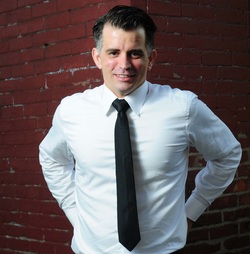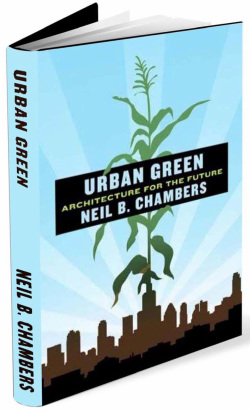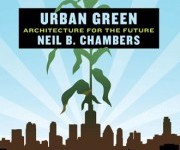
Neil Chambers’ new book, Urban Green: Architecture for the Future, is a study in imprecision. Ankle deep and a mile wide, the book reads like a half-baked primer in green design and conservation science. It could have used another year or two in the oven.
It’s too bad. At the heart of this book — the end, actually — there’s an interesting idea. And while he only brushes past it in the book, Chambers, a design consultant and blogger for Treehugger.com, has an interesting story to tell.
Urban Green opens with Chambers’ epiphany that in our quest to save the planet, eco-groovy gadgets have become a grand distraction. “People think all this green stuff is going to help us keep the skies blue, keep birds in the sky,” he said in an interview this week. “The majority of the things we’re talking about today are not getting us any closer to that — including green buildings.”
It’s not a small statement for a guy who passes his days working on such structures, and Chambers spends the rest of the book in search of a new mode of design that just might keep those birds aloft. Along the way, he offers a mildly interesting critique of green building standards, fumbles through a basic lesson on conservation biology, and makes a tortured comparison of humans and beavers, suggesting that we should strive to be more like “keystone species” that prop up ecosystems rather than tear them down.
Chambers is a better self promoter than writer, but ultimately, he has a worthwhile point: If we’re serious about creating a society that exists in harmony with natural systems, we’ll need to do more than just build an occasional “green” building. Just as conservation biologists talk about restoring entire landscapes, Chambers argues that we need to craft a civilization that meshes with wild systems. He goes so far as to imagine “invisible cities” that function as a part of their surrounding ecosystems, where there are no hard boundaries between human habitation and natural habitat.
Nifty, right? But can it be done? Chambers has a story that suggests maybe it could, at least on a small scale — but it gets just a passing mention in the book.
 A few years back, Chambers’ design firm was working on a housing development in Myrtle Beach, S.C. The project was slated for the edge of a body of water not far from the white sand beaches that draw millions to this seaside town each summer. None of the younger locals seemed to know anything about the pool of water, but old-timers remembered it as Withers Swash, once a popular swimming and fishing spot. The Swash, actually an estuary, became contaminated with heavy metals and fecal bacteria, and the city turned its back on it.
A few years back, Chambers’ design firm was working on a housing development in Myrtle Beach, S.C. The project was slated for the edge of a body of water not far from the white sand beaches that draw millions to this seaside town each summer. None of the younger locals seemed to know anything about the pool of water, but old-timers remembered it as Withers Swash, once a popular swimming and fishing spot. The Swash, actually an estuary, became contaminated with heavy metals and fecal bacteria, and the city turned its back on it.
Chambers says he saw an opportunity to knit the ecosystem and the city back together, and before long, volunteers were planting the Swash with oysters — nature’s water filters. The oysters did nothing to address the sources of the pollution, of course, but they were a symbol of what might be possible if the city saw the estuary as an asset rather than a sewer.
“I understood the importance of doing something to create community,” Chambers said. “You can try a top-down [government-led] solution. Or you can do something on the ground, and people see that and get interested.”
The project drew the support of nonprofits such as the Surfrider Foundation. Local businesses joined the effort when they realized that cleaning up the Swash could cut down on the fecal bacteria that closed down the beaches several times each summer. Landowners were drawn in by the prospect of increasing their property values. Academics and government officials joined in, and the Withers Estuary Community Collaborative was born.
Today, the Myrtle Beach city council has adopted a plan that envisions Withers Swash as not only a storm-water filter, but also an engine for redevelopment and a place where locals will once again want to hang out. “In 20 or 30 years, this will be their Central Park,” Chambers says.
Chambers seems to have planted a seed in Withers Swash that may some day grow into something quite beautiful. Here’s hoping the ideas in this book, unfocused as they are, get there one day too.


